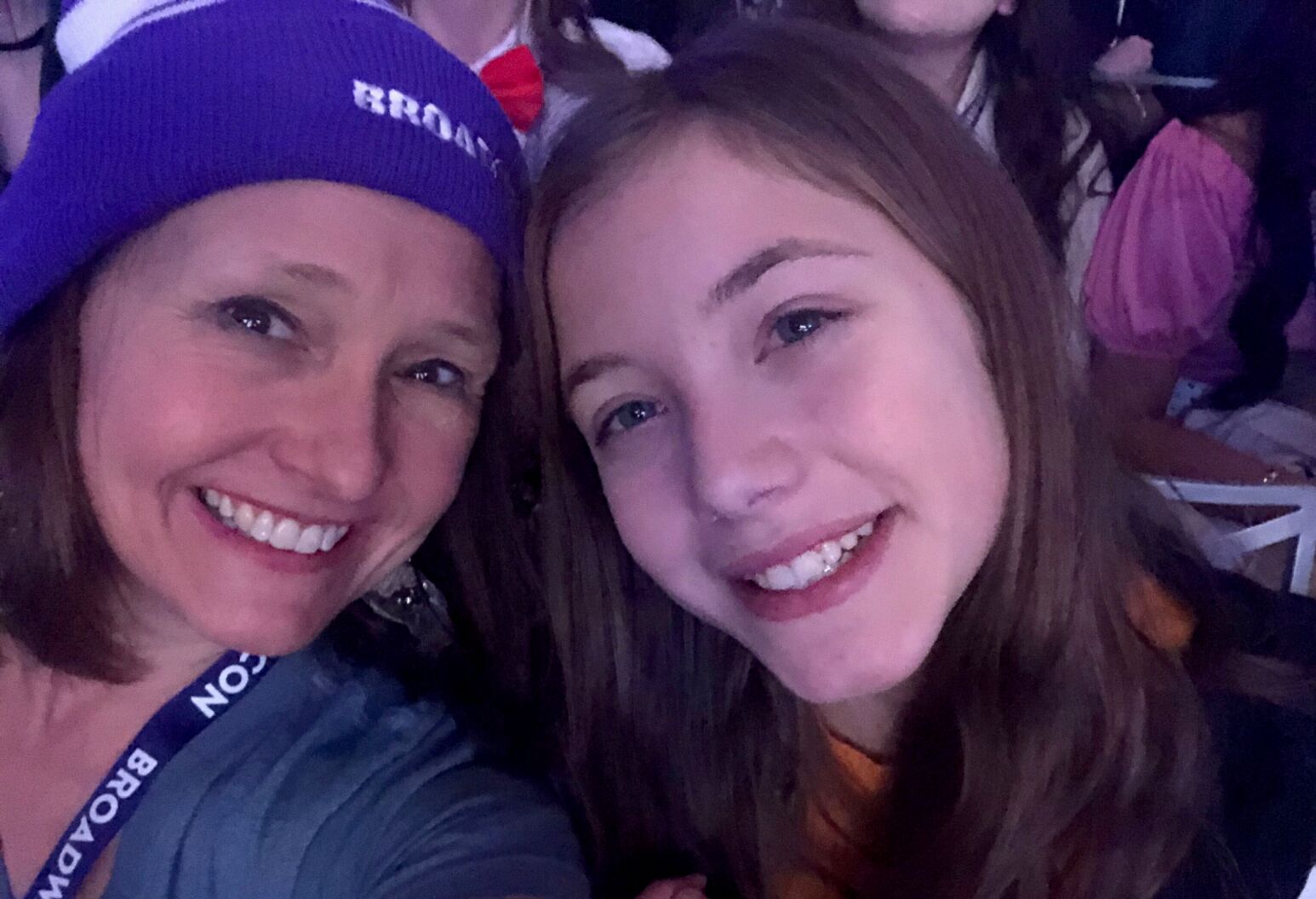parenting
My Ex Doesn't Want To Co-Parent

It’s real, she can’t “just try harder,” and she didn’t get it by watching too much TV.
8 min read
The first person to suggest that my daughter might have ADHD was her second-grade teacher. We were chatting at the school book fair when she drew me aside for a quiet conversation. She described Annika’s difficulties with focusing in class, her struggles to remember things she’d just been taught, and her string of unfinished assignments. “It reminds me a lot of my daughter who has ADHD,” she said. “I think it would be a good idea to have her assessed by a professional.”
Our daughter walked and talked early, started reading in pre-K, and was a bright and happy social butterfly in preschool. But as she progressed through elementary school, higher-level reading became harder for her, and she seemed to forget the basic lessons of addition and subtraction as soon as she’d learned them. “I don’t get it,” she’d repeat, fiddling with her hair or grabbing a toy when we tried to work with her on simple spelling or math lessons. Annika wasn’t “bouncing-off-the-walls” hyper, but she’d go through goofy cycles when she couldn’t seem to control escalating levels of silly antics.

So we took her to a neuropsychologist recommended by our pediatrician. After a lot of testing and interviews, she was diagnosed with attention-deficit/hyperactivity disorder (ADHD), combined type. (There are three types of ADHD: predominantly hyperactive-impulse, predominantly inattentive, and a combination of both.) While it was the inattentive side of things that was giving Annika the most trouble in school—she frequently couldn’t follow multi-step instructions, keep up with the teacher’s lesson, or even track conversations in the lunchroom—she also had a disruptive tendency to chatter and fiddle with objects at her desk, and just generally found it difficult to sit still.
No one wants to hear that their child has a condition that might make it harder for them in school or in life. But now that we finally knew at least some of what lay behind her increasing difficulties not just academically, but socially, we could do something about it. In the five years since her diagnosis, our family has learned a lot about ADHD. We’ve also learned that many people don’t understand what ADHD means. Here’s what I wish they understood.
Periodically, someone in my social media feed will post an article by some supposed expert declaring that “ADHD isn’t real,” often suggesting that parents and teachers are just overreacting to normal childhood behaviors. When these articles pop up, I practically have to tie my hands behind my back to keep from rage-typing back at whoever posted them. I wish they could have spent some time in our house, watching our daughter struggle with things that came easily to other kids, and despite all our best efforts to help her, hearing her cry over and over again, “What’s wrong with my brain?”
ADHD is real, just like depression and other “invisible” conditions of brain structure function and/or chemistry are real. All the major medical organizations, including the National Institutes of Health, the American Medical Association, the American Psychiatric Association, and the U.S. Centers for Disease Control, recognize ADHD as a medical condition. A number of imaging studies, including a major report from experts in the Netherlands published in 2017, provide strong evidence of structural differences in the brains of both children and adults with ADHD.
These changes appear to particularly affect something called “executive functioning,” which scientists have compared to the conductor of an orchestra. Impairments in executive function can mean kids struggle to stay on task; process new information more slowly; and have difficulty focusing, maintaining, and shifting their attention. It also affects working memory, making it challenging to memorize new math facts or spelling words, or follow the directions of a multi-step problem. Which is exactly the kind of thing that makes school a minefield for kids like Annika.
Reading the comments section of any online article about ADHD can be enough to make any parent of a kid with ADHD feel like a total failure. We’re told that we caused our children’s condition with helicopter parenting or too-strict parenting or too-permissive parenting, too much screen time, too little exercise, too much junk food …
Those things may well cause other problems, but they don’t cause ADHD. And we can’t “cure” ADHD with different parenting tactics. You wouldn’t tell the parents of a child with type 1 diabetes that firmer discipline would get that child’s pancreas to make insulin, would you? Well, parents of a child with ADHD can’t use firmer discipline to rewire their brain.
This one was hard for us to understand, too, at first. When my daughter looks off in the distance or says “Wait, what?” after we’ve asked her to go over her homework assignments, she isn’t just being rude or stubborn.
When you don’t have ADHD, it’s a lot easier to shut out the sounds of the clock ticking, or the funny thing you just remembered that happened at lunch, and focus on what’s in front of you. With ADHD, lots of things come flooding at you with an equal level of intensity and importance. It takes real concentration and effort to determine what isn’t important right now and shut those things out, so you can focus on what is important.
Wouldn’t you have trouble listening to what someone was saying, or focusing on a work project, if someone were breaking concrete with a jackhammer two feet away? For Annika, a quiet conversation on the other side of the room, another teacher poking their head into the classroom, or an intrusive thought about what she’s going to have for lunch, can be as distracting as that jackhammer.
My husband and I couldn’t help but be affected by the chorus of voices pronouncing the evils of “drugging your kid.” So at first we avoided ADHD medications. We sought out a therapist and worked with the child study team at her school to develop an individualized education plan (IEP) with an array of tools, resources, and adjustments to help her succeed—such as extra time on tests, seating near the teacher, and extra in-class teaching support.
And it helped. But it wasn’t enough.
By fourth grade, she continued to struggle even with her IEP interventions, and homework was still a daily misery. She’d come home, take one look at the assignment, and whimper, “I need help!” A couple of pages of work took hours and almost always ended in tears (not just hers).
After talking with her child psychiatrist, we decided to try a stimulant in the Adderall/Ritalin family known as Quillivant XR—for “extended release.” She would take it before leaving for school in the morning, and its effects should last through the end of the school day and homework time.
For the first couple of days after she started medication, the homework routine stayed the same. She’d look at it and whimper, “I need help.” But then one day—I’ll never forget this—she started, “I need help … oh, wait. No I don’t.” And we soon heard from her teachers. “Annika is doing so much better in school! She’s participating in class and answering questions and understanding the lessons.”
Medications don’t work for everyone with ADHD, and even when they do work, it can take a lot of trial and error to find the right one. Sometimes they come with side effects that kids and parents may decide aren’t worth it. (Stimulants can suppress appetite, for example, so we’re constantly keeping an eye on Annika’s eating habits to make sure she’s getting enough nourishment.) And they’re not a magic solution—Annika still has an IEP, and still needs other interventions to help her succeed in school.
But whenever we think about the difference between the girl Annika was before she started taking medication and who she is now, we know that we made the right choice. Before, she was anxious, isolated, struggling, miserable, often in tears, and falling further and further behind in school. The meds didn’t turn her into a zombie. She’s still herself, but a much more confident, focused version of herself, doing better socially, bringing home solid As and Bs in school, and pursuing her dreams of a career in theater.
Last year, Annika came home one day in tears after being teased about the “easy” reading level of a book she’d picked out for an assignment. “We were reading that kind of book in second grade!” the other kids said to her, laughing. “Everyone thinks I’m dumb!” she sobbed.
Let me be clear: ADHD has nothing to do with intelligence. Standard school environments are a challenge for Annika. It’s harder for her to learn things like multiplication tables, or to keep focus on a line of text so that she can follow what the book is saying. But she’s smart in ways I can’t dream of being. She’s wildly creative. She has an eye for design and an amazing visual way of thinking. Her close-up nature photography, taken from surprising angles, is beautiful to behold. And did I mention that she’s a phenomenal singer and actress who left audiences in tears performing in a community theater production of “Fun Home” last summer?

ADHD has been called the “entrepreneur’s superpower.” Many successful business leaders, like Virgin Group’s Richard Branson, Ingvar Kamprad, who founded the IKEA stores, and Kinko’s copy mogul Paul Orfalea, have ADHD. So do Olympians Simone Biles and Michael Phelps, and one of Annika’s idols, Tony Award-winning actress Audra McDonald.
Looking at it that way, some people like to suggest that ADHD is a gift. I think that’s probably taking it too far. I’m pretty sure Annika would tell you that she’d like to return that gift and exchange it for a set of Beats headphones, rose gold, please. But ADHD is part of who she is, part of what makes her herself, in all her wonderful, messy, creative, quirky beauty.
The Well is Northwell Health’s commitment to the future of health care. In this time of information overabundance, much of which is inaccurate, unhelpful, or even difficult to understand, Northwell Health is on a mission to make a difference as an honest, trusted, and caring partner. The site connects with consumers to provide them with personalized content that reduces their stress, makes them laugh, and ultimately feel more confident and capable on their healthcare journey.